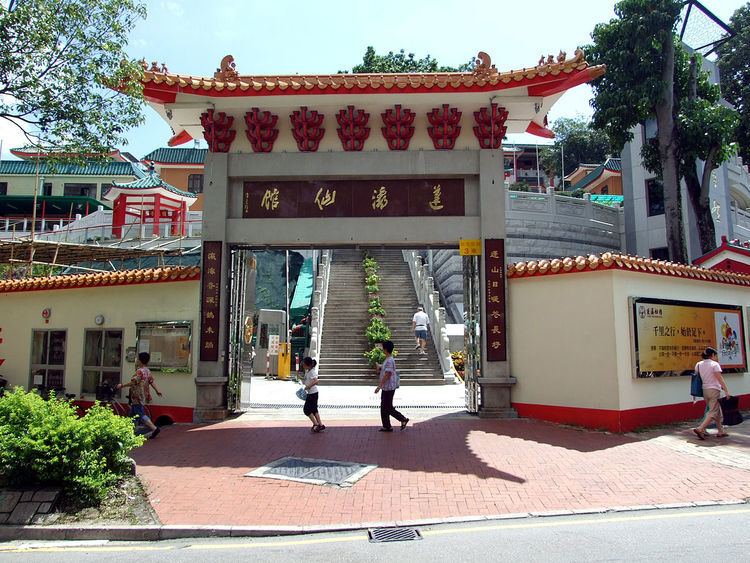Phone +852 2669 9186 | Country China | |
 | ||
Similar Sheung Shui Bus Terminus, Luen Wo Hui Bus Terminus, Landmark North, Fanling Station, Yan Shing Court | ||
Fung Ying Seen Koon (Chinese: 蓬瀛仙館) was founded in 1929 as an affiliate of the Quanzhen Longmen Sect (全真龍門派) of Daoism. It was named after the two fairy islands of Fung Lai and Ying Chau of the Bohai Sea. Dominating the skyline from its commanding site on a hillside overlooking the New Territories town of Fanling in Hong Kong, the FYSK is a superb example of Daoist design and craftsmanship. Its massive orange-tiled double roof, built to traditional design and supported by stout red pillars of stone, catches the eyes immediately, inviting the visitor to step up to its entrance and inspect the many examples of artistic craftsmanship to be found within its grounds.
Contents
- Fung ying seen koon
- Grand Temple
- Guanyin Temple
- Yuen San Temple
- The Colorful Sculpture of Yellow Emperor Inquires After the Tao
- The Craving of The Scroll of Eighty Seven Immortals
- Vegetarian canteen
- References
Fung ying seen koon
Grand Temple
The Grand Temple is for the worship of Taishang Laojun (太上老君), Lü Dongbin (呂洞賓) and Qiu Chuji (丘處機). The middle one is Laojun. Laojun is one of the three highest deities of Daoism. According to Daoist classics, Laojun manifested himself in the form of Laozi, the Great philosopher of ancient China, best known as the author of the Daodejing (道德經). Lü Dongbin is one of the Five Patriarchs (五祖) in the Quenzhen School. He is one of the earliest masters of the tradition of Internal alchemy (內丹). Qiu Chuji was a great disciple of Wang Chongyang (王重陽), the founder of Quanzhen School. He was also referred to as the founder of Longmen Sect.
Guanyin Temple
The Guanyin Temple was established to worship Guanyin (觀音大士). Guanyin is deity of mercy and compassion.
Yuen San Temple
The Yuen San Temple was established to worship Doumu (斗姆) and the sixty Great Generals of the Chinese sexagesimal cycle (六十太歲大將軍). Doumu is the mother of deities of the stars of the Northern Dipper (北斗). She is referred to as a deity of medicine, healing, fertility and nurture. The Chinese sexagesimal cycle corresponding to a person’s year of birth are considered to denote his or her fundamental destiny. The sixty Great Generals alternately govern and act as the patron deities.
The Colorful Sculpture of "Yellow Emperor Inquires After the Tao"
This painting depicts the Yellow Emperor's visit to the hermit Guangchengzi (廣成子) of Mt. Kongdong (崆峒山), who discovered the secrets of immortality and the Dao. The scene demonstrates that the legendary first emperor of China set the precedent for seeking advice from wise Daoist hermits.
The Craving of "The Scroll of Eighty-Seven Immortals"
The scroll depicts 87 immortals paying homage to the supreme deity. The picture is considered as a representative of China's best achievement in line drawing techniques of classical portraits. Xu Beihong (徐悲鴻, 1895-1953) attributed it to a 7th century painter Wu Daozi (吳道子) and even stamped a seal on it reading "Beihong's Life". The scroll is now collected by Xu Beihong Museum.
Vegetarian canteen
The vegetarian canteen provides vegetarian food for tourists, disciples and the public.
